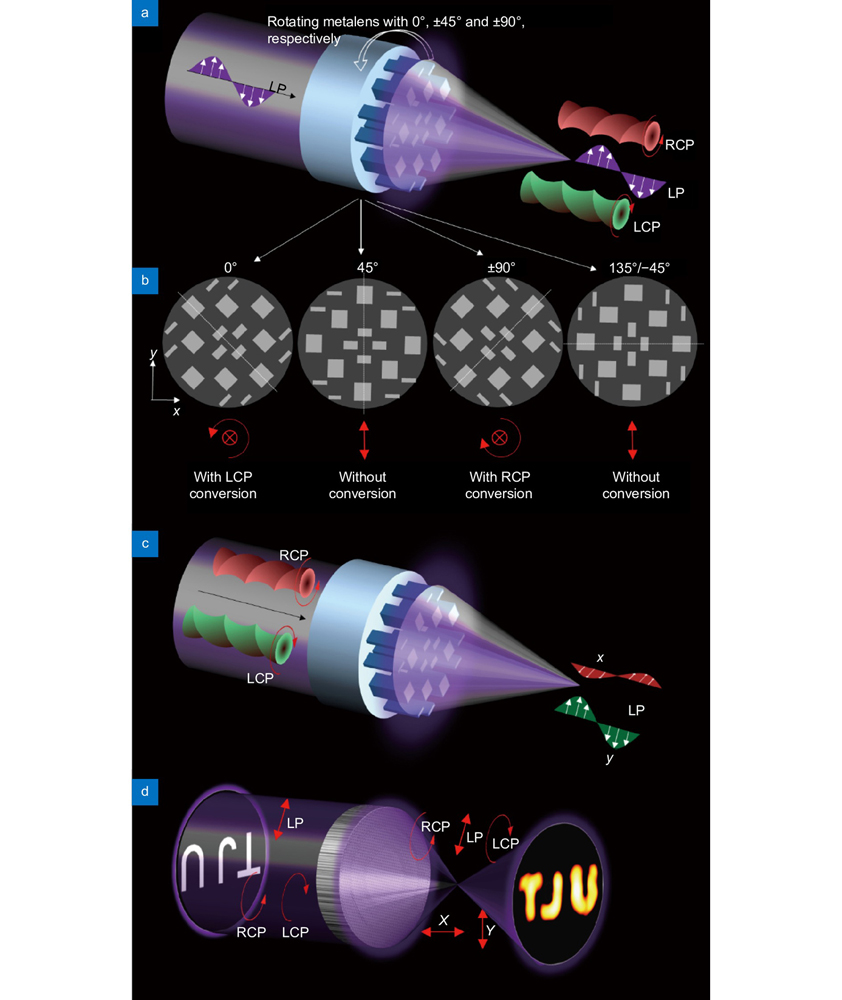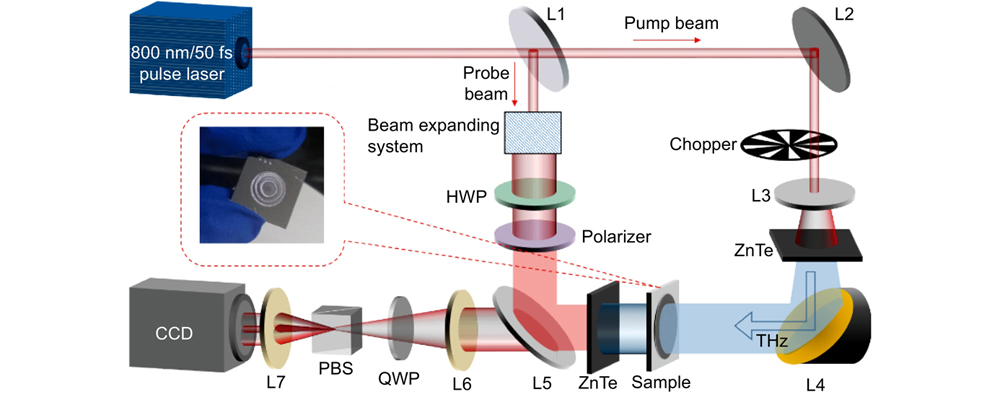Jitao Li, Guocui Wang, Zhen Yue, Jingyu Liu, Jie Li, Chenglong Zheng, Yating Zhang, Yan Zhang, Jianquan Yao. Dynamic phase assembled terahertz metalens for reversible conversion between linear polarization and arbitrary circular polarization[J]. Opto-Electronic Advances, 2022, 5(1): 210062
Search by keywords or author
- Opto-Electronic Advances
- Vol. 5, Issue 1, 210062 (2022)

Fig. 1. (a , b ) With incident LP, the schematic functions for conversion and focusing of the metalens with different rotation angles. (c ) With incident LCP and RCP, the schematic functions for conversion and focusing of the metalens. (d ) The schematic THz imaging. The helix directions of LCP and RCP waves correspond to counterclockwise and clockwise rotation of electric field vector when viewed along wave propagation direction, respectively.

Fig. 2. The schematic characterization system for THz focusing metalens.
Fig. 3. (a ) The schematic five basic structures, and parameters of length ‘l’ and width ‘w’ shown in inset table; Ix: incident x-LP, Tx: co-polarization transmission at x-axis, Ty: cross-polarization transmission at y-axis. (b ) The phases based on Tx of five basic structures. (c ) The schematic picture of the metalens. (d ) The amplitude of Tx and Ty under incident x-LP. (e ) The amplitude ratio of Ty/Tx. (f ) The phase difference between Tx and Ty.
Fig. 4. (a ) The schematic change of unit cells when the whole metalens is rotated with θ. (b ) When the whole metalens is rotated with 45o, the amplitude of Tx and Ty under incident x-LP. (c ) When the whole metalens is rotated with ±90o, the phase difference of Tx and Ty under incident x-LP. (d ) When the whole metalens is rotated with 135o/–45o, the phase difference of Tx and Ty under incident x-LP.
Fig. 5. (a ) The SEM images of the metalens sample. (b ) The simulative and experimental results for focusing and conversion of incident x-LP to transmission CP. (c ) The simulative and experimental results for focusing of incident x-LP, without polarization conversion. The simulation results in the cross section are shown in Section 4 of Supplementary information.
Fig. 6. (a , b ) Respectively, RCP and LCP through the rotated metalens will be converted into a LP having an angle θ to x-axis and y-axis; x-LP and y-LP corresponding to the case without metalens rotation; x-LP’ and y-LP’ corresponding to the case with metalens rotation. (c ) The simulative and experimental results for focusing and conversion of incident CP to transmission LP. The simulation results in the cross section are shown in Section 6 in Supplementary Information.
Fig. 7. (a ) The object-image relationship. (b ) The simulative results for THz imaging under incident x-LP. (c ) The simulative results for THz imaging under incident RLP and LCP.

Set citation alerts for the article
Please enter your email address



